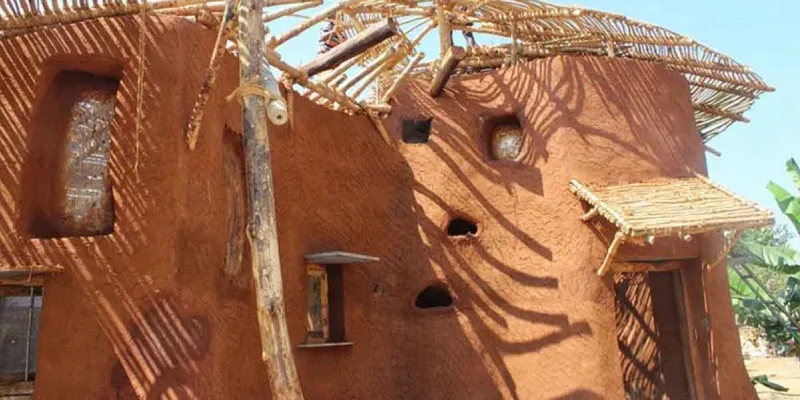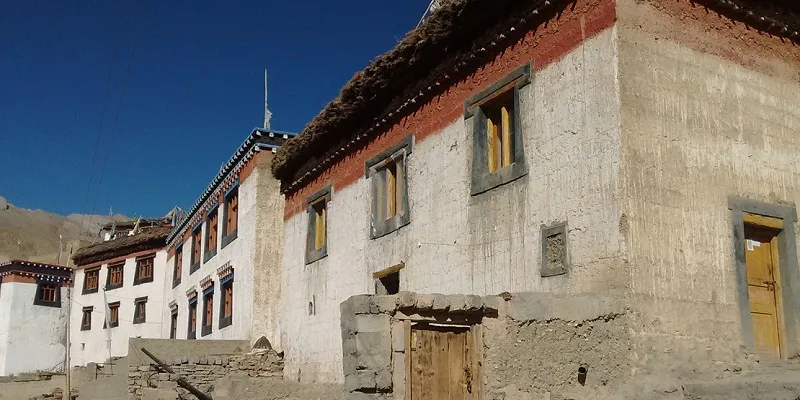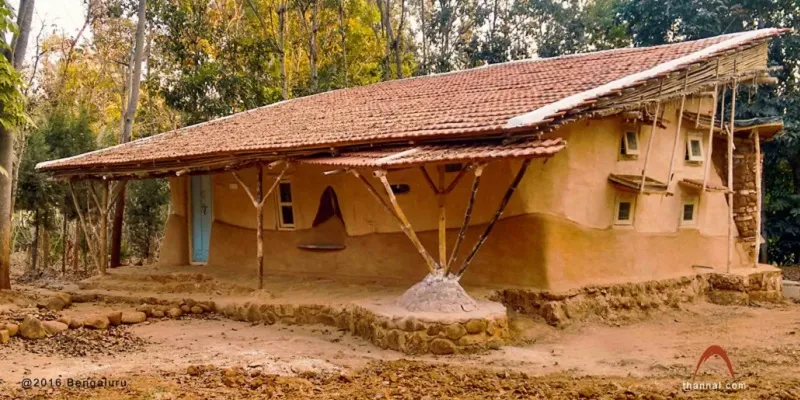Looking to build a mudhouse in 2017? It's possible, and here's what you need to know
While it is important we take steps to keep up with the times, it is equally important to continue adopting practices, such as building sustainable mudhouses, to protect the fragile ecocsystem.
Houses made of mud are ‘kachcha’, and houses made of cement are ‘pakka’. This is a concept that has been shoved down our throats by school curricula. Yes, the human race has to move ahead and there have to be developments, but the way a single material has taken over landscapes across India (and the world) is terrifying. Especially in terrains like the Himalayas or closer to the oceans, an overdose of cement and concrete can be detrimental for the surrounding environment. The massive earthquakes in Nepal are big enough examples of the kind of consequences that can occur if we give in to all the desires of convenience and permanence.
It is a never-ending pursuit that has blinded us to such an extent that it is high time we look at alternatives more seriously. Designers and architects in the western countries are conducting experiments with new materials, but we’re still far away from getting more eco-friendly alternatives to the mainstream. Cement—which is basically highly processed mud coming from a centralised system—is a great material, and the industry will keep growing, but the issue is with the monopoly, which brings inherent evils into the system like causing harm to the environment.
In this post, we try to simplify the process for anyone who is looking to build a ‘pakka’ house of mud. And why mud? Because you can find it around yourself, it doesn’t require much processing and it is very eco-friendly. This post has been written after watching and working with people who have been doing this for a long time. We have spoken to some experts—Biju of Thannal in Tamil Nadu, Didi Contractor in Himachal Pradesh, Mark of Dharamalaya in Himachal Pradesh, Trupti Doshi in Pondicherry—before we put together this article.
Understanding mud houses
There are four different types of natural mud-building techniques- Cob, Adobe, Rammed Earth and Wattle & Daub (there can be minor variations to this).

Cob is the simplest and oldest mud-building technique. This is primarily a mixture of the soil you dig for the foundation, some clay, cow dung, hay, cow urine and lime. The proportion needs to be decided by checking the soil at hand. Laurie Baker’s work and guides are an amazing place to start to learn more about where to begin while working with cob. Once the mixture is ready, one just makes small balls and starts putting them together to make a wall. With cob, one can give any shape one wants.

For Adobe, the first steps are similar to that of Cob, but after making the mix, mud is put into blocks and sun-dried to form bricks. These mud bricks are then used to make walls, and are plastered with the same mud mix. In case of rammed earth, we have two wooden planks tied on to the two sides of the wall, and then the mud mix filled in. Once filled in, it is pushed in from the top by walking on it or by a beam.

For regions that have bamboo, Wattle & Daub method is used. This is basically a system wherein a structure is first made with bamboo, and to give mass to the structure, mud is daubed over it from both sides.
Planning and costing
The most important thing while building with mud is to plan in advance. It is a relatively slower process and, hence, if one plans in advance and gathers all the material before building, it saves on a lot of time and money. Things that need to be decided on:
- What are the materials available locally? When can you get them?
- What is the best time for construction? Start planning atleast six months in advance.
- Do you have access to people who can work with the materials you have?
Costing of a mud/stone house depends a lot on how one procures the materials. If properly planned, one can build a house only by paying for labour costs.
To give a very rough estimate, building a 10X10ft mudhouse, which has stones in the foundation, mud for walls for one feet, and roof made from wood and slate would cost around Rs 1.25 lakh. And the major cost here is for the roofing, since one needs slanted roofs.
Building with mud is a great way to learn what goes into construction, and how one can start thinking of building with sustainable eco-friendly methods. Mud comes straight from nature. Learning from it, one can think of new developments that are happening in the world and see what suits them the best. As for mud, it has always been around, and is available for anyone who wants to have a smaller footprint (and also food for a curious mind).
If you need more specifics or want to get involved with activities in the space, feel free to write to us at [email protected].







